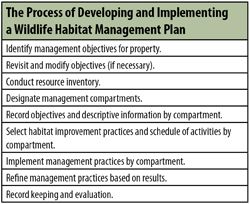|
|
Post by trappnman on Dec 24, 2012 11:52:25 GMT -6
lot more habitat back then it seemed,
|
|
|
|
Post by trappnman on Dec 24, 2012 12:09:50 GMT -6
funny how the Reps say the same ,yet they cut funding for conservation lands and programs all leading to less habitat. if CRP was funded better, we wouldn;t see all the acres in our area, being plowed under this year- but back to rats- for sure habitat, but I also think that with declining habitat, that extended reasons do have an effect. don't forget back in the 70s, earlier in states like MN WI the season ended end of dec- there was no winter, spring rat trapping back to the point of do dollars affect populations- I think they can, but only in declining habitat and population levels. lets face it- at a $20 rat- no one is drving by anything and it would also matter, I'd think, if the prices stayed at that level- most times they went up in the past 5 decades, they have come back down hard- and those little places (and big)repopulate- heres an interesting study showing water levels etc www.dtic.mil/dtic/tr/fulltext/u2/a348241.pdf |
|
|
|
Post by blackhammer on Dec 24, 2012 12:52:31 GMT -6
The Republicans are worse on conservation than the Dems. It's the one area in which I suppose I am a little more liberal. But it seems conservation is the one topic no one has any passion for politically.
|
|
|
|
Post by mustelameister on Dec 24, 2012 21:32:18 GMT -6
This lead us to the conclusion that water levels, for the most
part, did not affect muskrat harvest on the Refuge. Note,
however, that it is widely held from numerous other studies
that muskrat populations are affected by water level
fluctuations. We believe our results do not refute those
studies. Other factors that affect muskrat harvest include the
length of the trapping season, fur prices both of muskrats and
other species, weather conditions, habitat changes, and
trapping effort. Although sometimes used as a surrogate for
population estimates, harvest may not be a good estimator for
muskrat populations.IMO, water levels do indeed affect muskrat recruitment which in turn affect muskrat harvest. What's not to understand? When a marsh goes dry the muskrats are sent packing. And the predators are having a field day with 'em. Mink and MuskratSeason Limits No bag limit statewide. Zone Dates Northern Oct. 20 – Feb. 28, 2013
Southern Oct. 27 – Feb. 28, 2013
Winnebago Oct. 27 – Mar. 15, 2013
Mississippi * – Feb. 28, 2013* Begins the day after duck season closes or the second Monday in November (Nov. 12), whichever occurs first. Four months of open season on 'rats in most of the state. For crying out loud, too friggin' long, IMO. Can't speak for the 5-month season in the Winnebago zone, don't know anything about it. How is the Mississippi River and other drought-stressed areas going to rebound with sufficient 'rats this spring to recolonize lost territories? " Boots on the ground" . . . time to chuck the helicopter surveys for otter in this state and get the folks who make the laws out there to see for themselves what is and what isn't. Last I heard DNR wants to make the 'rat opener a common date statewide, adding another week to the southern zone. I must be missing something . . .  Makes one wonder what the "management objectives" are for certain furbearing species, and a few others, eh?
|
|
|
|
Post by thorsmightyhammer on Dec 25, 2012 10:00:19 GMT -6
Let the biologists do their job.
If the habitat is suitable the rats will be there.
I trapped a big and I mean big lake late last winter, got hammered in the fall and hammered hard all winter. Know how many rats are there this year? Probably more than last, more than like a hell of a lot more.
Trapped another lake this winter that 6 or so years ago they drained to kill the carp. Been hammerd hard for four straight years. Still a pile of rats on it and I mean several thousand.
In distressed areas we can play a major role on them but if the habitat is there the rats will be.
If they shorten the season I think they should take a month of the beginning.
|
|
|
|
Post by blackhammer on Dec 25, 2012 10:16:54 GMT -6
The last three ,four years I have hammered the rats. My catch has increased each year. My situation, while I have lost a few areas because of the drought the streams and rivers have had a very good population ironically because of less big rains or should I say floods. The hundred year type floods of a few years ago just decimated the rats.Even the two, three floods a year we were getting. I believe the floods are a direct result of our farming practices.So the dry years in effect really help me more than hurt. I also trapped a small lake that has been hammered in the past and found a good pop of rats last winter and well checkit out again shortly. From what I have heard the Mississippi is just a joke right now for rats.. With rain I believe it could get good quickly though.. I wonder about the management of the lock and dams and it's effect on rats? I have no idea if it causes problems or not. A month at the beginning Steve? Self interests a consideration?  |
|
|
|
Post by thorsmightyhammer on Dec 25, 2012 11:51:52 GMT -6
A month at the beginning Steve? Self interests a consideration?
Why not?
Everybody else would say drop the back end because it doesnt impact them.
Heck we all know that more are caught in the fist six weeks than the last two months.
Throw in a normal winter with 2 3 feet of snow and no open water season and most would stay home.
Note I said most.
|
|
|
|
Post by blackhammer on Dec 25, 2012 12:24:22 GMT -6
If the goal was to cut the harvest that sure would do it. The first month right now I suppose 90 percent of the harvest. Some of that would be made up later but not a huge percentage.
|
|
|
|
Post by trappnman on Dec 26, 2012 7:27:37 GMT -6
ok- lets drop the first month- and at the same time, make opening huts illegal................... that would surely cut harvest..................
|
|
|
|
Post by thorsmightyhammer on Dec 26, 2012 8:35:47 GMT -6
ok- lets drop the first month- and at the same time, make opening huts illegal................... that would surely cut harvest.................. Ok. I'll still get em...... Waaaay back when it opened the first of december and you couldnt trap huts and they got em. If they could, I can. |
|
|
|
Post by trappnman on Dec 26, 2012 8:55:31 GMT -6
when did it open 1st of December? I know in the mid 50s and on, it was laways early nov, occasionally late oct
I don't want to see the season closed at all- and I take more than my share of rats and am still taking them.
my point was only that during the 50s, 60s, 70s and for part of the 80s the season always ended dec 31st.
and was simply wondering if, in poor habitat years , the extended season along with higher prices (as in this year) would BE ONE REASON to prevent rats from coming back as we traditionally have seen it on the river and marshes
just speculative thinking boys, not out to ruin anyones parade
|
|
|
|
Post by thorsmightyhammer on Dec 26, 2012 9:19:45 GMT -6
I'm sure that trapping does play a role but I'm more than sure habitat degradation is the main factor.
|
|
|
|
Post by trappnman on Dec 26, 2012 10:12:26 GMT -6
and I think you are right- talking to Erb, his best guess is the same. and a lot of it is, in his opinion, the native water plants, cattails etc are being replaced by other types of grasses, so them arshes don't support as many as they do.
Back in the late 50s and early 60s, the upper pools literally had rat houses one could jump from one to one, if one was agile and had a mind to, and they were trapped hard, albeit for a short time frame and they came back year after year
now so much of that good habitat looks good to the eye, but not for rats
I concur with blackhammer on the stability of rat populations on streams, even through constant flooding, IF the habitat stays put- sometimes you get those floods that lay bare the banks etc and then that takes time- but on a lot of streams I see the population WITH good habitat, remain constant for more thna 2 decades trapping them
|
|